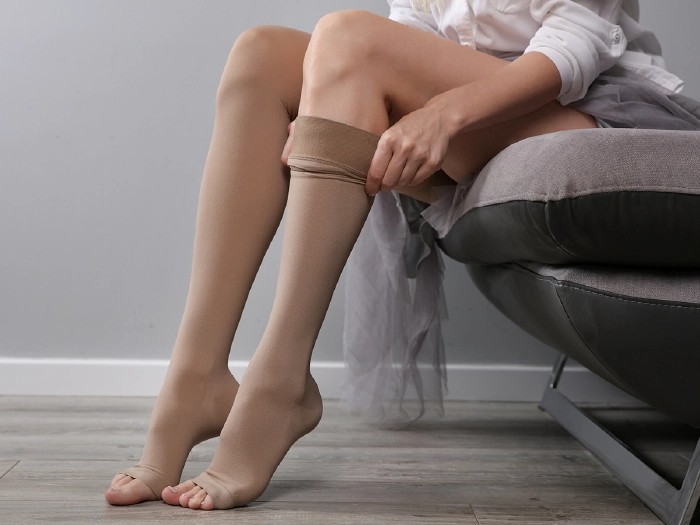
The Benefits of 20-30 mmHg Compression Garments: A Vital Tool for Circulatory Health
Compression garments play a crucial role in promoting circulation and preventing various health conditions, especially for individuals dealing with moderate to severe varicose veins, recovering from surgery, or at risk of developing deep vein thrombosis (DVT). Among the different levels of compression, 20-30 mmHg compression garments stand out for their effectiveness in addressing these specific concerns.
This compression level, often referred to as "firm compression," offers substantial benefits by alleviating discomfort, aiding recovery, and preventing serious complications. Here’s an in-depth look at how these garments can enhance your health and well-being.
Designed for Targeted Relief
1. Alleviating Moderate to Severe Varicose Veins
Varicose veins are not only unsightly but can also cause significant pain, discomfort, and swelling. These veins occur when blood pools in the legs due to weakened vein walls or valves, leading to enlarged, twisted veins.
Compression garments with a 20-30 mmHg pressure range provide the necessary support to promote blood flow and reduce the strain on your veins. By encouraging proper circulation, these garments help alleviate the symptoms of varicose veins, including swelling, aching, and a heavy sensation in the legs.
2. Supporting Post-Surgical Recovery
After surgery, especially procedures involving the legs or veins, maintaining proper circulation is essential for healing and preventing complications. Poor circulation during recovery can lead to swelling, pain, and even blood clots.
20-30 mmHg compression garments offer firm support that reduces post-operative swelling (edema) and promotes faster healing. By improving blood flow, they ensure oxygen and nutrients reach the affected area, aiding in tissue repair and reducing the risk of complications.
3. Preventing Deep Vein Thrombosis (DVT)
DVT is a serious condition where blood clots form in deep veins, usually in the legs. Risk factors include prolonged immobility (e.g., during long flights), recent surgery, or certain medical conditions.
Wearing compression garments with firm compression helps maintain steady blood flow, preventing clots from forming. For individuals at high risk of DVT, these garments are a simple and non-invasive preventive measure.
Why Choose 20-30 mmHg Compression Garments?
This specific compression range provides:
-
Firm yet Comfortable Support: The level of pressure is sufficient to address moderate to severe issues without causing discomfort.
-
Targeted Effectiveness: Graduated compression ensures maximum pressure at the ankle, gradually decreasing up the leg to promote optimal circulation.
-
Versatility: Suitable for everyday wear, travel, and post-operative recovery, making it an all-around solution for circulatory health.
Who Should Use 20-30 mmHg Compression Garments?
These garments are particularly beneficial for:
-
Individuals with Varicose Veins: Managing and alleviating symptoms associated with moderate to severe varicose veins.
-
Post-Surgical Patients: Supporting recovery after vein surgery, orthopedic procedures, or other surgeries involving the legs.
-
High-Risk Individuals for DVT: People who travel frequently, are bedridden, or have a family history of blood clots. If you’re located in Florida and need expert advice, consider visiting one of the Florida Vein Clinics for professional evaluation and treatment options.
Tips for Choosing and Using Compression Garments
-
Consult a Healthcare Provider
Always consult your doctor before using 20-30 mmHg compression garments, especially if you have underlying health conditions. -
Get the Right Fit
Proper sizing is crucial for effectiveness and comfort. Measure your legs accurately or consult a professional for guidance. -
Wear Them Correctly
Put on your compression garments in the morning when swelling is minimal. Follow the manufacturer’s instructions for best results. -
Maintain Hygiene
Wash your garments regularly to maintain elasticity and cleanliness.
Conclusion
Whether you’re managing varicose veins, recovering from surgery, or preventing serious conditions like DVT, 20-30 mmHg compression garments are a valuable tool for maintaining your circulatory health. Their firm compression level provides the support needed to alleviate discomfort, aid in recovery, and prevent complications, making them an essential addition to your healthcare routine.
If you’re experiencing symptoms or belong to a high-risk group, consult your healthcare provider to determine if 20-30 mmHg compression garments are right for you. With proper use, they can significantly enhance your comfort, mobility, and overall quality of life.

Comments (0)